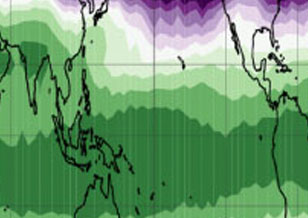 Examining Impact of Boreal Summer El Niño‚ Southern Oscillation Events on Tropical Lower Stratospheric Ozone : Using Aura MLS Ozone Observations
Examining Impact of Boreal Summer El Niño‚ Southern Oscillation Events on Tropical Lower Stratospheric Ozone : Using Aura MLS Ozone Observations The interannual variability of tropical lower stratosphere ozone and its connections to sea surface temperatures in the equatorial Pacific are examined using a combination of chemistry climate model simulations, satellite observations, and reanalyses.
 Application of sulfur dioxide observations supporting the cleantech industry's goal of reducing air pollution
Application of sulfur dioxide observations supporting the cleantech industry's goal of reducing air pollution In this study, we present the result of the application of space-based sulfur dioxide (SO2) observations to evaluate the efficacy of cleantech solutions in reducing air polluting emissions from metal smelting.
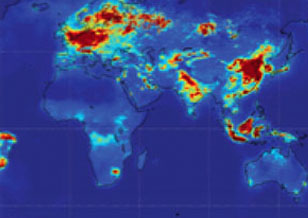 Ambient Surface Nitrogen Dioxide and Effects Globally on Asthma Exacerbation and Incidence
Ambient Surface Nitrogen Dioxide and Effects Globally on Asthma Exacerbation and Incidence Asthma is the most prevalent chronic respiratory disease worldwide, affecting 358 million people in 2015. Ambient air pollution exacerbates asthma among populations around the world and may also contribute to new-onset asthma.
 Aura Ozone Monitoring Instrument (OMI) sulfur dioxide & nitrogen dioxide products highlighted in recent air quality trends reports
Aura Ozone Monitoring Instrument (OMI) sulfur dioxide & nitrogen dioxide products highlighted in recent air quality trends reports OMI data are used in a variety of air quality applications, such as monitoring trends in air pollution.
 Nitrogen Dioxide Emission Reduction Slowdown Unexpected: Observed by Aura's Ozone Monitoring Instrument (OMI)
Nitrogen Dioxide Emission Reduction Slowdown Unexpected: Observed by Aura's Ozone Monitoring Instrument (OMI) Ground and satellite observations show that air pollution regulations in the United States (US) have resulted in substantial reductions in emissions and corresponding improvements in air quality over the last several decades. However, large uncertainties remain in evaluating how recent regulations affect different emission sectors and pollutant trends.
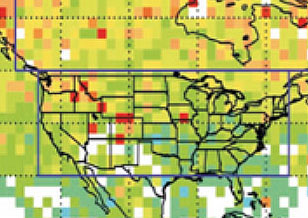 Investigating peroxyacyl nitrate in North American biomass burning plumes : Using Aura Tropospheric Emission Spectrometer (TES) retrievals
Investigating peroxyacyl nitrate in North American biomass burning plumes : Using Aura Tropospheric Emission Spectrometer (TES) retrievals Peroxyacyl nitrate (PAN) is a critical atmospheric reservoir for nitrogen oxide radicals, and plays a lead role in their redistribution in the troposphere.
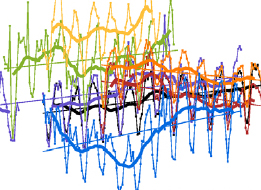 Multiple Aura Datasets Contribute to the Tropospheric Ozone Assessment Report (TOAR)
Multiple Aura Datasets Contribute to the Tropospheric Ozone Assessment Report (TOAR) In the troposphere, ozone is both a major pollutant and a strong greenhouse gas. Although spaceborne and ground-based observations largely agree on the overall tropospheric ozone loading, estimates of decadal-scale trends vary significantly between datasets.
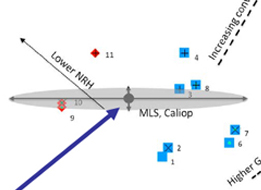 Quantifying Convective Hydration of the Stratosphere Using Aura Microwave Limb Sounder & CALIPSO Data
Quantifying Convective Hydration of the Stratosphere Using Aura Microwave Limb Sounder & CALIPSO Data Variations in stratospheric water vapor are known to have a significant impact on surface climate, yet the processes controlling the long-term evolution of stratospheric humidity remain incompletely understood.
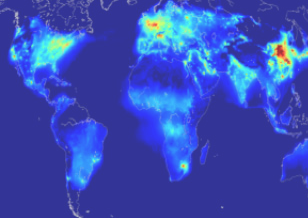 Ozone Monitoring Instrument: 14 years in space
Ozone Monitoring Instrument: 14 years in space This overview paper highlights the many ways that Aura Ozone Monitoring Instrument (OMI) data have advanced atmospheric composition research and benefited society.
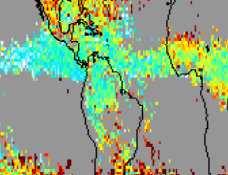 Simulations Demonstrate How Convection & Chemistry Impact Mid-Tropospheric Ozone
Simulations Demonstrate How Convection & Chemistry Impact Mid-Tropospheric Ozone NASA Goddard Earth Observing System Chemistry Climate Model (GEOSCCM) simulations reproduce the tropospheric ozone distribution observed by Aura OMI/MLS. The simulation shows that photochemical production exceeds loss throughout Tropics.
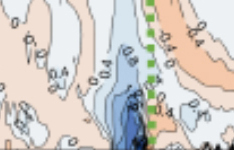 Estimating Polar Middle Atmosphere Descent Rates from changes in Carbon Monoxide
Estimating Polar Middle Atmosphere Descent Rates from changes in Carbon Monoxide This study combines remote sensing observations and modeling to assess the effects of processes other than descent on such estimates, thus providing new information to improve both data-driven and modeled estimates of three-dimensional transport. These results are important to verifying climate model results, and highlight the need for continuing global measurement of long-lived trace gases.
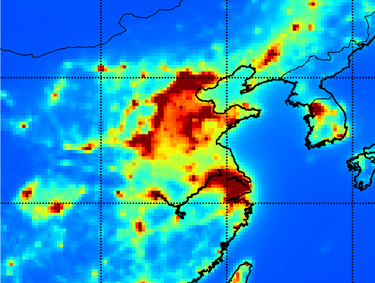 Evaluating model Nitrogen Dioxide measurements over China
Evaluating model Nitrogen Dioxide measurements over China This result is the first validation of modeling Nitrogen dioxide (NO2) results with the widespread in situ network, which became recently available. Our study demonstrates the capabilities of chemistry-transport models (CTMs) such as CHIMERE, combined with satellite observations from Aura OMI, to simulate NO2 concentrations at the surface over China.
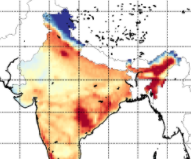 Which processes drive observed variations of Formaldehyde columns over India?
Which processes drive observed variations of Formaldehyde columns over India? Formaldehyde (HCHO) plays a role in determining the oxidizing capacity of the global troposphere. The principal source of HCHO is the oxidation of methane (CH4), which provides a global ambient background. Minor direct HCHO sources include biomass burning, industry, agriculture, automobiles, shipping, and vegetation
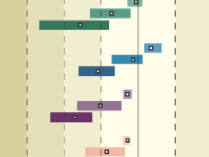 Using A-Train Polar Stratospheric Cloud Information to Validate Polar Stratospheric Reanalysis Temperatures
Using A-Train Polar Stratospheric Cloud Information to Validate Polar Stratospheric Reanalysis Temperatures Stratospheric polar processes, such as the potential for ozone loss via heterogeneous chemical reactions, depend critically on temperature. We have assessed the temperature biases of several modern meteorological reanalysis datasets.
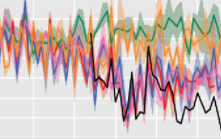 Detecting Impacts on Global Ozone
Detecting Impacts on Global Ozone How well can the impacts of changes in ozone depleting substances (ODSs) and greenhouse gases (GHGs) on global ozone (O3 ) be detected and distinguished? Aura Microwave Limb Sounder (MLS) Global O3 profiles are used to detect fingerprints of ODS & GHG impacts.
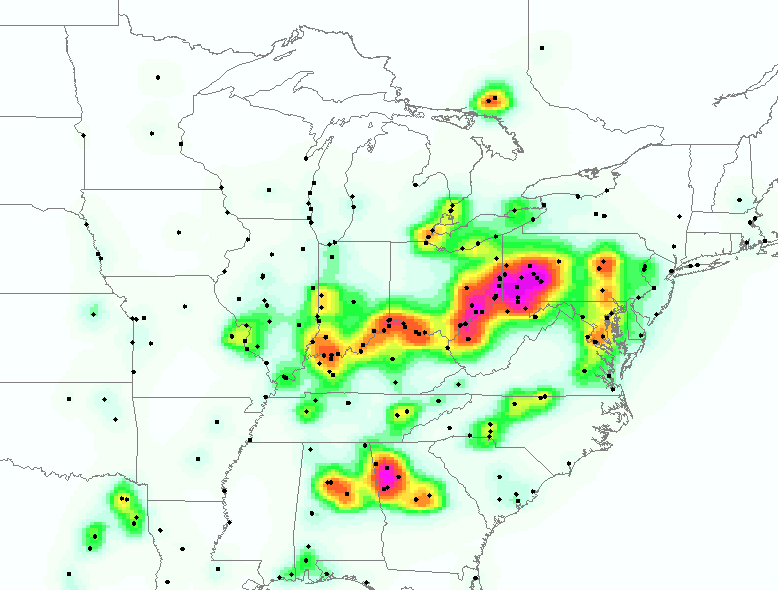 The Relationship Between OMI Sulfur Dioxide Data & Known Emissions Creates A Multi-Decade Record
The Relationship Between OMI Sulfur Dioxide Data & Known Emissions Creates A Multi-Decade Record Using Aura's Ozone Monitoring Instrument (OMI) sulfur dioxide data collected between 2005-2015, a multi-decade record was produced using prior SO2 emission data from 1980 to the present